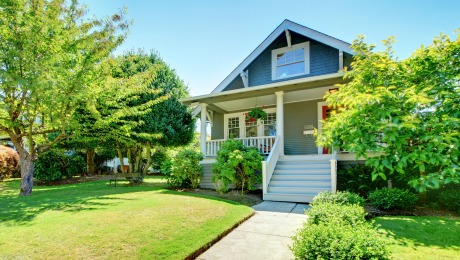Are Mortgage Rates Higher for Second Homes?

As the housing market continues to bounce back, more and more Americans are choosing to invest in second homes. Second home buyers may use these types of properties for a variety of reasons. Whether they are future rentals, family vacation homes or retirement destinations, second home sales are on the rise for the second consecutive year. The National Association of Realtors (NAR) reports that, “from 2013 when 717,000 vacation homes in the U.S. were sold, numbers have climbed more than 50 percent.” The NAR’s chief economist, Lawrence Yun has stated that he expects sales for second homes to continue increasing throughout 2015.
In years past, lending agencies had tougher guidelines for borrowers aiming to purchase second homes. As recently as 2014, a common practice among residential lenders was to require a 30 percent down payment for a second or vacation home. A healthier economy, rising home values and a more steady stock market have collectively led to a change to 20 percent down payments for most second home borrowers.
But what about the interest rates for a second mortgage?
Interest rates have normally been higher for mortgages on second homes. That was because such home purchases were viewed by lenders as more risky. This is due to the fact that second homes can (in some instances) be used as rental property (more on that below), and also because second homes are typically seen as a luxury. When owners face hard financial times, luxuries are the first things to go. In other words, lenders realize that it is more likely for a home buyer to default on a second home than their primary residence.
Purchasing a second home may also mean a unique set of deductions on a prospective landlord’s income tax. The “14-Day or 10% Rule” allows a second home to be rented for up to 14 days a year and the homeowner can then pocket the income from the second home. Second homeowners who rent the property for more than 14 days are viewed as landlords by the IRS and must report those funds as taxable income.
Owners of second homes can also make other types of deductions, depending on how frequently the home is rented vs. how often it is “for personal use.” Fortunately, the IRS defines “personal use” in pretty broad terms. Such a designation covers you or any family members including your spouse, children, siblings, parents, grandparents and grandchildren. The days that the place is rented to anyone for less than fair market value counts as a personal day. There’s a very informative article from Kiplinger that provides the details on tax rules for second homes. You can read it here, but be sure to consult with a licensed, professional tax advisor.
For anyone holding two mortgages, lenders may expect borrowers to stay within the debt-to-income limits as determined by Fannie Mae and Freddie Mac. This would mean that your total debt payments, including all mortgages, may not go over 36 percent of your gross income. On the bright side, if you plan to rent the property, you may be able to count some of the projected rent as income when calculating the ratio. Be sure to discuss with your lender what is an acceptable assumption.
Subscribe To Our Newsletter
Sign up with your email address to receive news and updates.